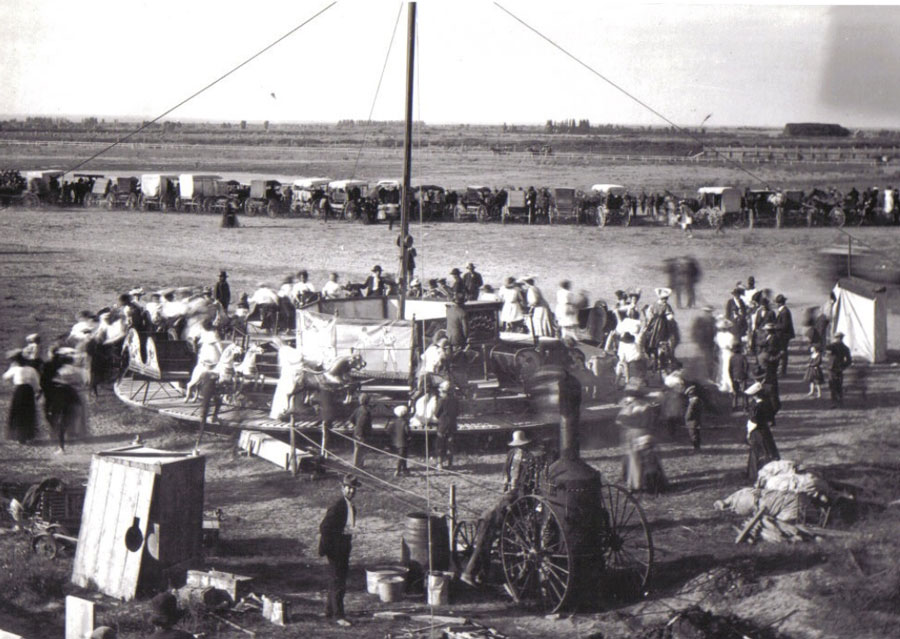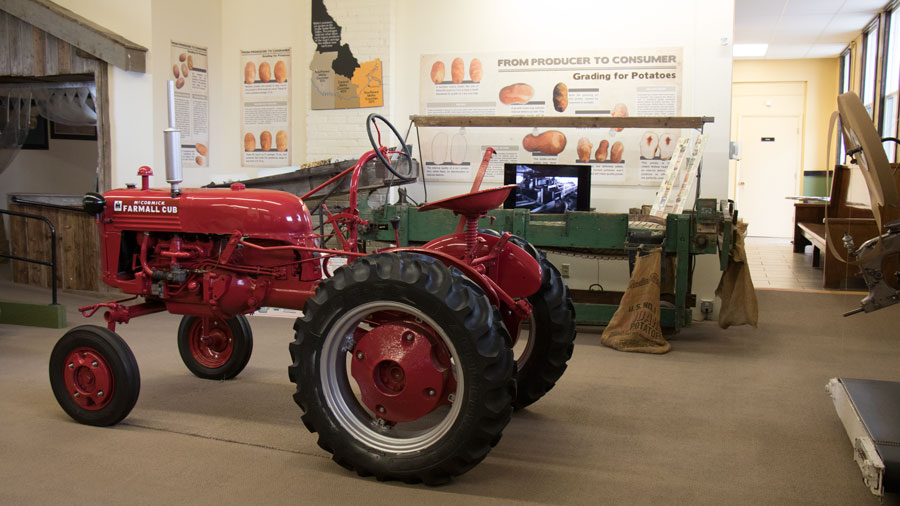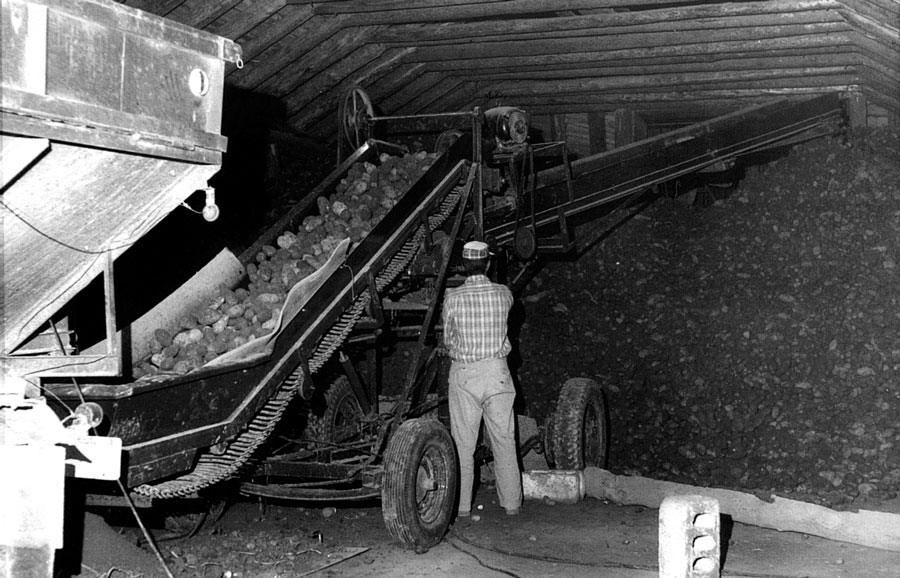We Are East Idaho: Blackfoot
Published at | Updated atBLACKFOOT — It may not be particularly large, but Blackfoot certainly has an impact on eastern Idaho.
The community of around 12,000 people is situated between the region’s two largest population centers and it heavily impacts both Idaho Falls and Pocatello. Blackfoot is home to the Eastern Idaho State Fair — one of the largest and longest running events in eastern Idaho.
Blackfoot is also home to many large and innovative businesses that bring workers in from throughout the region. The community has a rich agricultural history and has been dubbed the “Potato Capital of the World.”
Eastern Idaho State Fair
Without a doubt, one of the best examples of Blackfoot’s pull on the region is the annual Eastern Idaho State Fair.
Started in 1902, organizers often refer to the fair as a “giant family reunion.” It’s an annual get-together where people come to socialize, shop, compete, be entertained, and most of all, to eat.
While it started small as a mere cattle show, nowadays the nine-day event brings roughly 250,000 people to Blackfoot from a 16-county region and beyond. Those people all have a variety of reasons for visiting and many interesting stories to tell.
“I remember growing up as a kid and going to the fair. This was the place Mom got excited about because she got to see the Bosch man,” Fair General Manager Brandon Bird said. “The Bosch man had all the new gizmos for her Bosch mixer. This was the place where you came to get goods and services that were just far enough away you waited until (the fair) to able to come and enjoy them.”
Over the 117 years, the fair has hosted a variety of entertainers — both large and small.
In 1973, the fair invited a young aspiring singer who was on the brink of what would become a very successful career in country music. Tanya Tucker was 14 years old at the time, and prior to performing, she toured the fair exhibits and was fascinated with a newborn litter of pigs.
“(Tanya) just fell in love and really wanted one,” Livestock Secretary Darlene Hatch said.
So the owners of the piglets decided to gift her one. Several boys bathed the piglet, put a Pampers diaper on it and rubbed it down with Lilac bath powder.
Hatch drove one of the boys and the piglet in a golf cart to the stage where Tucker was performing.
“It was in a box, and when he opened it to show us, the smell that came out of that box — a combination of Pampers and Lilac — was a lot worse than an unbathed piglet would have been,” Hatch said.
Tucker excitedly accepted the piglet on stage. After the show, she managed to sneak it back to her hotel and eventually on an airplane to take home. Hatch says Tucker had an uncle that took the pig and raised it on a ranch.
Some of the other big names to visit the fair include Tim McGraw, Kenny Chesney, Reba McEntire, Martina McBride, Rascal Flatts, Nickelback and many others. Sometimes the entertainment has been much simpler.
In 1904, the featured attraction was a “lady balloonist,” according to a city history written by local historian Lois Bates.
In 1906, a steam-powered merry-go-round was debuted at the fair. A newspaper editorial at the time encouraged everyone to go see it “even if it interfered with business.”

And the fair does impact local businesses in Blackfoot. During fair time, many local restaurants and entertainment venues see a decline in revenue and attendance. But at the same time, the fair also brings in millions of dollars that are distributed to vendors throughout eastern Idaho.
Some people even get a little creative with moneymaking during fair time. Fairground Superintendent Barry Adams says some neighbors have bought and held empty lots near the fairground just to sell parking to patrons during the fair. Adams says one nearby resident makes an entire year’s housing payment just on the revenue he brings in from selling parking.
So whether you’re buying or selling at the fair, eating, being entertained, or just visiting with friends — it’s clear the fair is something that keeps Blackfoot near and dear to the hearts of many eastern Idahoans.
“People come back to the fair because there is something special here,” Bird said. “It’s a people thing and it’s a lot of fun. Memories are made at the Eastern Idaho State Fair.”
How Blackfoot began
The history of Blackfoot began quite a few years before the start of the Eastern Idaho State Fair.
The community’s earliest history began at Stevens Stage Stop in 1866, where “tired and hungry travelers were welcomed and fed by Fredrick and Finetta Stevens in a log building just a stone’s throw from the Blackfoot River,” according to Bates’ city history.
The stage stop closed in 1872, but the Stevens family stayed in the area and eventually opened a general store in what would become Blackfoot. A community began to develop in the area.
But it wasn’t until the Utah Northern Railroad surveyed and developed the area for a new rail line between Ogden (in the Utah Territory) and Butte (in the Montana Territory) that things really started to pick up. The line was completed on Dec. 24, 1878, when the first train arrived in Blackfoot.
“It was a joyous celebration, especially for the children as they were all given fruit and candy. It was written as the train came through Fort Hall the Indians did war dances, as they had given up their land for the railroad,” according to the city history.

Within a decade, Blackfoot was a booming, albeit somewhat wild, community.
Bates recalls the account of a traveler who called Blackfoot a “nice little town” before evening came, and the cowboys arrived.
“They shot out the street lamps, and they didn’t care what they shot,” Bates said, paraphrasing the woman’s account. “They even shot people. They were just wild.”
Bates said the cowboys would ride into the general store, take what they wanted and leave. The sheriff went after them, but never caught them, Bates said.
Blackfoot became the Bingham County seat, home of the Territory Insane Asylum, headquarters for the U.S. Land Office for Idaho’s Southern District, as well as the U.S. 3rd Judicial District Court.
The city also boasted seven saloons, two churches, a public school, livery stable, a bank, and an assortment of retail and general merchandise stores. By 1887, some three million pounds of freight were being shipped through Blackfoot.
Agriculture wasn’t a huge industry in the earliest days of the community. It was primarily a railway town. But as settlers discovered the fertile soil in Bingham County, the industry started to grow, Bates said. Eventually, agriculture would become one of Blackfoot’s most defining characteristics.
“The Potato Capital of the World”
One of the earliest crops harvested in the region were sugar beets, but it was another vegetable — the potato — that left a permanent mark on Blackfoot. Today there is even a potato museum in Blackfoot recognizing its impact.
“Bingham County produces 20 percent of all the potatoes in the state,” Idaho Potato Museum Executive Director Tish Dahmen said. “So you can see why Bingham County and Blackfoot is so important to the gross product in Idaho. That’s why we’ve been called the ‘Potato Capital of the World.'”
The name doesn’t just represent the community’s chief export though. It also recognizes agricultural innovation that has come from Blackfoot residents.

In the 1950s, brothers Carl and Leo Hobbs, who were potato harvesters in Blackfoot, found the work of moving potatoes into storage to be a long and arduous process.
“At that time there was no potato equipment readily available,” Spudnik Marketing Manager Andrew Blight said. “These two men were working for a grower and decided there had to be an easier way to move and store potatoes. They built a machine and made it into a business.”
They founded Spudnik in 1958, and marketed the first potato piler for loading potatoes into storage and later the scooper for unloading. Now 61 years later, the local company, owned internationally by the Grimme Group, has 350 employees and sells innovative equipment across the globe to in excess of $50 million.
Blight says Blackfoot remains the best place for the business, and they plan to continue growing in the coming years.

A growing business community
Spudnik isn’t the only business growing locally. Blackfoot Mayor Marc Carroll a significant number of larger businesses centered in Blackfoot are continually drawing people from around the region.
“When I was running for office in 2017, I always had the impression that Blackfoot was a bedroom community for the INL and for Idaho Falls and Pocatello,” Carroll said. “But when I came into office I found out immediately that we have as many people coming into Blackfoot from those two communities as we do going out.”
Many of the businesses are agricultural, such as Basic American Foods or Idaho Potato Packers (owned by Nonpareil), which produce fresh and frozen food products. Some are technological such as Premier Technology, a large engineering and manufacturing company. Others are both, such as BiologiQ, a company that creates a plastic from starches in potato waste.

One of the largest companies in Blackfoot is Bingham Healthcare, the parent company of Bingham Memorial Hospital and a growing number of clinics and physicians offices in Ammon, Idaho Falls, Shelley, Blackfoot, Chubbuck, Soda Springs, American Falls, Malad and Arco.
Bingham Healthcare now employs nearly 1,000 individuals in eastern Idaho, with most of its workforce in Bingham County.
“Blackfoot is significantly smaller than the communities to the north and the south, but we’ve been able to build and create a world-class healthcare facility that folks are willing to travel too,” company spokesman Mark Baker said.
Bingham Healthcare also tries to help the community in other ways, such as sponsoring (along with Idaho Central Credit Union) a large fireworks display at Jensens Grove during Celebrate Blackfoot on the Saturday before Independence Day. Last year, 50,000 to 55,000 people attended the event.
The fireworks will be on Saturday, June 29, this year. To learn more about the event visit the Blackfoot Chamber of Commerce website.
To learn more about Blackfoot visit the city’s website.
“Blackfoot is really a good place to live, we have strong family values … and we’re on the cusp,” Carroll said. “Things can happen here to make Blackfoot really grow really fast, or we can say no and stay a small town.”
EastIdahoNews.com comment boards are a place for open, honest, and civil communication between readers regarding the news of the day and issues facing our communities. We encourage commenters to stay on topic, use positive and constructive language, and be empathetic to the feelings of other commenters. THINK BEFORE YOU POST. Click here for more details on our commenting rules.



